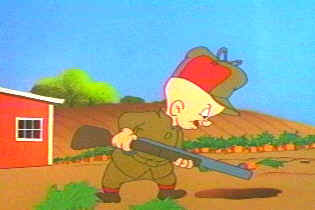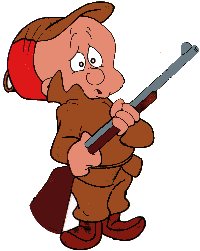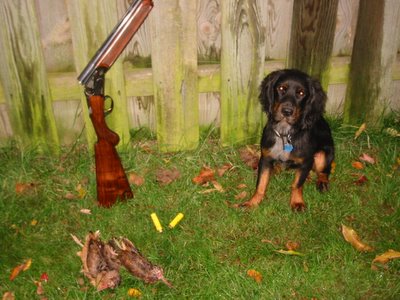
A thin sun was already rising on a crisp December morning when I rolled out of the rack for a day of leisurely deer hunting. I pulled into Grady's Christmas Tree Farm around 10 a.m. and rang the doorbell, carrying the still-warm cherry cheese Danish I'd bought as a “thank you” to my hosts. After some pleasant conversation over coffee and a bite, I was back out the door. As soon as my vest was loaded with the requisite candy bars, hand warmers and paperwork, I headed northwards through a light snow pack onto the property.
I had only been walking for about half an hour when I bounced a doe from where she had been laying near two small ponds in a field of goldenrod. Technically, the deer was on the neighbor's property. She was also a mere yearling. Although doe are fair game here by permit, I just watched with a small smile as she bounded off.
Ten minutes later, I was comfortably sitting against a small tree, overlooking a gamy-looking bowl with a swampy trickle oozing down its middle. This was a good place to daydream and chew on my Snickers. But no deer appeared.
As I prepared to move on, two orange-clad hunters came my way from the other side of the swamp. These were Keith and Tom, a couple of Grady's neighbors in their late teens. We did howdy n' shake, discussed strategy ("they're layin' in them pines," Keith confided), then went our separate ways.
I still-hunted without event for another 90 minutes. Getting a little chilly and a lot antsy, I decided to wander back towards the house for lunch and hot coffee. But I hadn't walked 20 yards from the tree where I’d last been sitting when I found some cold tracks in last night's snow. I figured that trying to follow this deer would settle the antsy part by curing the chilly part.
So I set to following the tracks into the woods. Cold cold cold tracks: the challenge was trailing this deer through several snowless swampy areas. I did, and soon fetched up to a hemlock tangle just beyond a tiny creek. Once again, the track became difficult to follow. I slowed down and studied the ground hard, following the tracks right through some gnarlies. They actually led me almost full circle. But on the far side of the tangle, the tracks were suddenly hot: that rascal had been laying in the tangle, literally under my nose.
These tracks were not remarkable for their length and breadth. They definitely didn’t belong to Old Hat Rack. Even so, it was a kick to have actually walked up a deer. I would tell my story back at home tonight, I daydreamed, and my wife would hang on to the Mighty Hunter's every word with admiration and rapt attention.
Following the hot track naturally increased the excitement level. Antsy and chilly were left for dead on the back side of that hemlock tangle. I noted that the deer was now heading in the general direction of the house. In fact, it crossed my in-coming track once, and bounced right through the target zone of another of my still-hunt stands. Oh well...
During all this tracking, I had heard a single shot here, and, a while later, a single shot there. I thought I might have driven this deer right into Keith and Tom. If so, I figured I'd just keep tracking, and help them drag the deer back to their car when I found them dressing it out. If I came upon a live deer instead, well, that would be just fine, too.

Soon, the track was bounding through a meadow of shoulder-high Christmas-trees-to-be. It disappeared at the edge of yet another wood, right at the base of a large old apple tree hopelessly tangled with thorns, prickers, and blackberries. I remembered how this deer had hidden just so a mile back. So I finally took the gun off my shoulder, and furtively slipped into the woods, sidestepping the thorns as best I could.
Ten yards ahead, there it lay at the base of a pole-sized tree: one tiny dead deer. Upon inspection, I saw it was a button buck. I daydreamed again of the admiring smiles of my wife: I had stalked this deer so relentlessly that it just up and died rather than prolong the Terror of a Stalk by the Mighty Hunter!
Upon closer inspection, however, “natural causes” were replaced by a shotgun slug through the heart as the immediate cause of death. My wife isn't impressed with my Mighty Hunter act anyway.
But now I was puzzled. Who would shoot a deer and then abandon it? I guessed that anybody dragging home a rabbit-sized critter in deer's clothing might be darn embarrassed with this “prize.” Even so, you just don't kill and run.
I followed the hunter's tracks from the swiftly cooling deer, and shortly came upon Keith and Tom. I asked which of them had shot the little buck. Neither of them had fired a shot, they said, but they had earlier seen two shadowy hunters skulking about the periphery of Grady's land. No sooner did the three of us return to the diminutive deer and curse the lowlife who would leave it in the woods when the two Shadowy Hunters arrived from over the hill, waving a doe management permit at me. It seems they had shot this pot-of-stew sized deer, but immediately discovered that their paperwork was back at the car. Now they were back to claim their prize. Happy enough ending, I guess.
I went back to the house for lunch and the telling of my mighty tale to hostess Sally and her daughter Mary. Did I notice just a hint of admiring sparkle at the edge of teenaged Mary's eye as I finished both tale and lunch and rose to go?
Yes I did! But the sparkle turned first into a snuffle, then a snicker, finally culminating in an outright guffaw. The Mighty Hunter had sat at the table for 30 minutes sporting his Hot Seat as a bright orange fashion accessory. The Mighty Hunter goes down in (orange) flames again. With dignity shattered, I fled the house for a final scoot around the property.

The only remarkable sign in the afternoon woods was a narrow track - kind of like a single fat cross-country ski - in the snow. After following it briefly, I noticed a drop of blood here and there. Then it hit me: the Shadow Hunters had dragged out their deer. For the life of me I couldn't understand why they hadn't just cut off its legs so they could stuff the remaining deer in a pocket.
















